
Having grown up in Italy, where freshly baked bread is an essential part of every meal, I have fond memories of the heavenly smell wafting out of bakeries in the early hours of the morning.
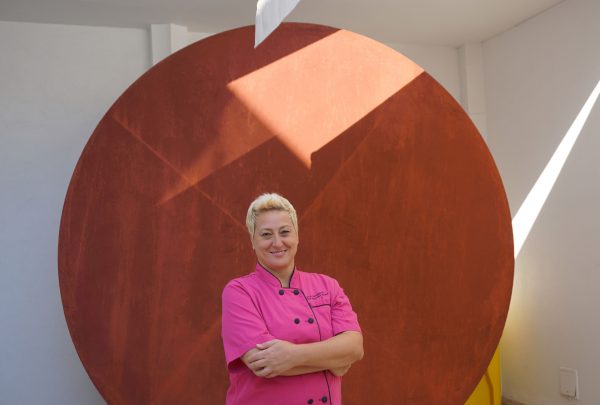
So I was excited to receive an invitation to a Bread Making class at the Italian Cultural Institute in Westwood, and I immediately contacted the teacher, Alessandra “Ale” Gambini. She was gracious and welcoming, so we met and she told me that her cookbook A Queen in the Kitchen is dedicated to the traditional Milanese and Northern Italian recipes of her 91-year-old grandmother Fernanda. I was intrigued that she was planning to show her students how to make gnocco fritto (fried dough), because that is a specialty of my hometown, Modena. I enjoyed a refresher course on its preparation, with simple ingredients of flour (00 zero zero, not all purpose), salt, water, milk and lard, kneading the dough with a modern Kitchen Aid mixer rather than by hand, rolling it out and cutting it into diamond shapes, cooking it in very hot vegetable oil and lard. The hot bubbly rectangles are then served with prosciutto and salami. You may watch Ale prepare gnocco fritto at this video link.
I thanked Ale for this amazing experience. She was off to present the annual event Taste of Italy at IAM, the Italian American Museum. Among the participants is Celestino Ristorante. I buy Italian breads and freshly made pastas at their Drago Bakery in Culver City.
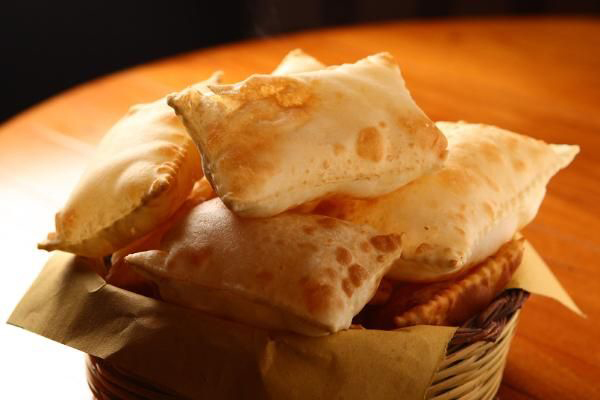
Most Italians are weary of nationalism, because of their recent history of fascism, and the disastrous decision by dictator Mussolini to join Hitler in June 1940, when he thought the war was nearly over after the fall of France. However Italians are extremely proud of their home towns, and Modena has many civic glories I like to boast about. Balsamic vinegar (aceto balsamico) is manufactured by small producers in and around Modena and exported all over the world. Famous tenor Luciano Pavarotti was born and lived in Modena his entire life, his country villa has now become a museum. Enzo Ferrari built his racing car factory in Maranello, Modena; a Ferrari Museum opened in 2012. Less well known is that the Maserati Factory is also in Modena, that photographer Franco Fontana is from Modena, that Lambrusco is the sparkling red wine of Modena.
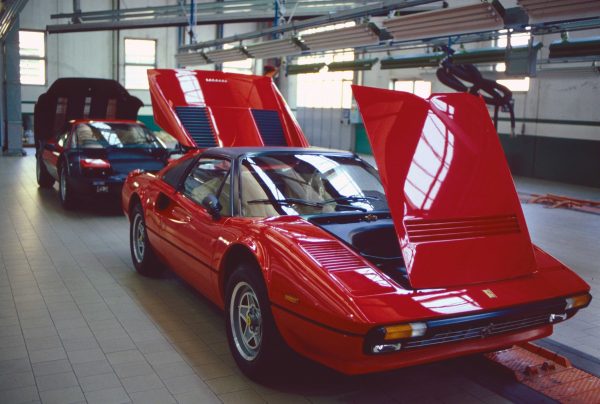
As for culinary specialties, two are only consumed in Modena, the liqueur Nocino, made from green walnuts, and Zampone, pig’s trotter stuffed with spiced pork meat. Well-known are foods that Modena shares with the nearby cities of Parma, Reggio and Bologna in the fertile region of Emilia-Romagna, the Po Valley: the aged cheese Parmigiano-Reggiano, the cured pig leg prosciutto, the stuffed pasta tortellini, and green lasagne, made with sheets of fresh spinach pasta, layered with grated parmesan, bechamel sauce and pork ragu, then baked in the oven.
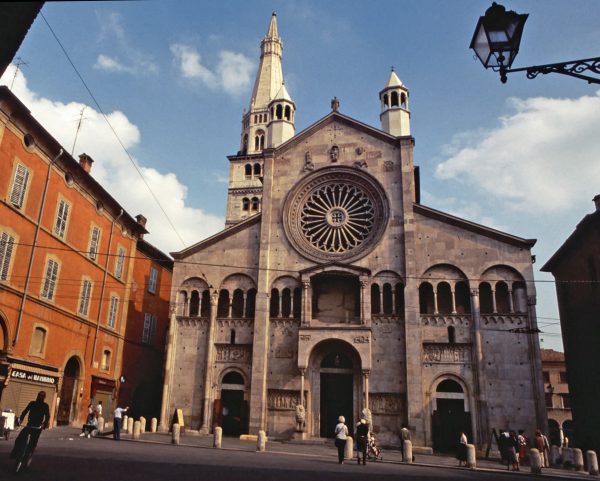
Modena was named Mutina in 183 B.C. by Roman Consul Marco Emilio Lepido, who built the main road, Via Emilia; it has a medieval center, the ancient walls were turned into a park surrounding the city, and many of its streets used to be canals, when Modena was the capital of the Estense Duchy (1598-1796); the Duke’s palace is now a Military Academy. The cobblestoned main square (Piazza Grande) is dominated by a splendid Romanesque cathedral (Duomo) and by the tall Ghirlandina belltower. Campanilismo takes its name from campanile (belltower), the symbol of devotion to your birth place. See some of my photos of Modena, color at this link, B&W at this link in the Elisa Leonelli, Photojournalist Collection at Claremont Colleges Digital Library.
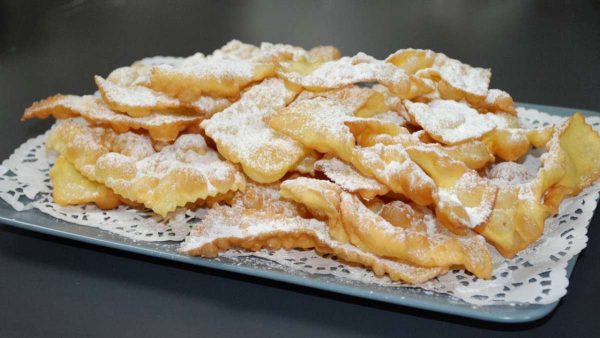
Back to fried bread, last year I participated in a festive evening organized by the Azzurra Foundation, where Elisabetta of ThinkItalian showed us how to make another treat I used to enjoy as a child in Modena: frappe (also called crostole, chiacchiere, bugie, cioffe), bows and ribbons of sweet dough fried in hot oil then sprinkled with powdered sugar. They are usually eaten to celebrate carnival, the party time before the fasting 40 days of Lent.
“Baking Bread” is one of four chapters of Michael Pollan’s 2013 book Cooked, and it’s called Air, while the other chapters are named after the classical elements of Fire (grilling meats), Water (cooking with liquids), and Earth (fermenting vegetables, milk, alcohol). That’s because for most breads you need to let the dough rise for hours after being leavened with yeast, to get filled up with air, before baking it in the oven.
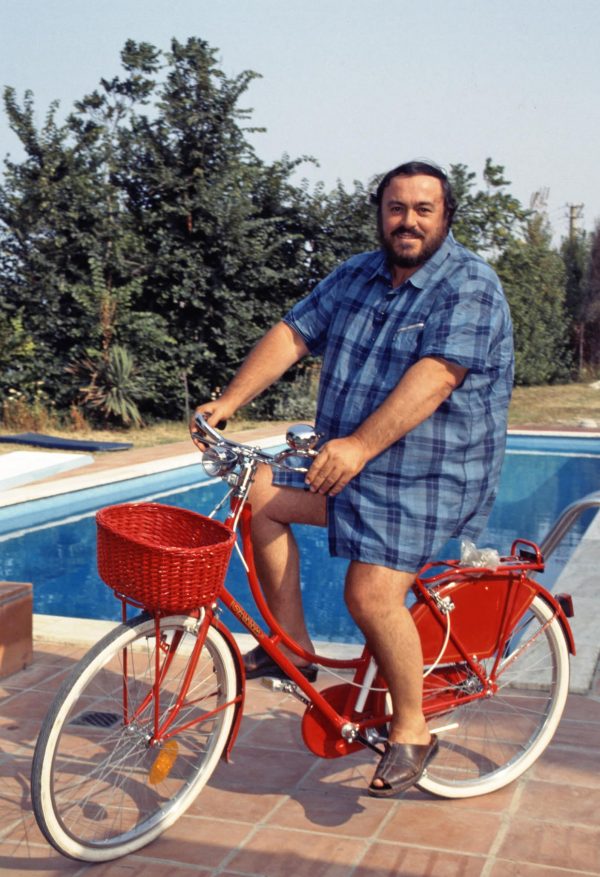
As a photo-journalist I wrote and photographed several articles about the glories of Modena. In 1978, I featured restaurant and food factory owner Giorgio Fini. You may read my article at this link. In 1979, I photographed the Ferrari factory and interviewed Enzo Ferrari. You can see those photos at this link, and read my article published in Westways magazine. I photographed Pavarotti and his family many times, in Modena and at his beach house in Pesaro, after meeting him in Los Angeles in 1979 backstage at an opera recital
This year Modena was featured in the Netflix comedy Master of None. Series creator Aziz Anzari spent two months in my hometown learning how to make tortellini, then conceived of a first episode as an homage to the neo-realist cinema classic The Bicycle Thief (Ladri di biciclette, 1948) directed by Vittorio De Sica, and shot it in B&W. In one scene, Aziz has dinner at Osteria Francescana, the renowned Modena restaurant of chef Massimo Bottura.
After living in Los Angeles for over 40 years, and loving my adopted city, I still miss the tastes and sights of my beloved Modena, with the nostalgia of an immigrant.
